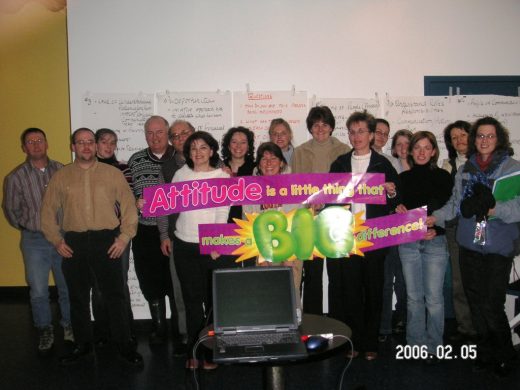
(Participants at a CED workshop on the Lower North Shore in Quebec – rural remote communities along the coast without a road network)
At a recent working session in Bonne Bay, Newfoundland entitled “Bonne Bay a Treasure and a Resource” there was much discussion on the way forward for Bonne Bay in light of it natural beauty, resources and location within a Canadian National Park.
This subject is more than timely, given the current economic, social, environmental and spiritual situation in the world. In rural environs it is more critical, as rural communities are disappearing faster than the ice in the Polar Regions.
It requires that people should contemplate the critical building blocks of society – the spiritual, economic, social and environment. Hopefully, serious contemplation will lead to greater understanding and actions that reflect the thoughts and feelings of all people, not just the experts and gurus that seem to overwhelm.
The fight for rural sustainability is much bigger than the communities themselves, as there are those who would advocate the complete elimination of “rural”. It requires a dialogue and interaction within these communities and with those external forces who would abolish them.
Community sustainability is itself a serious challenge, as most now cope with aging and declining populations, declining resources and economic shifts. Much of this challenge can be attributed to the project and short term mentality that has emerged. The belief that communities can build their own sustainability is myopic at best, as many of their traditional tools and processes have been centralized. This is the same for both rural and urban communities.
While change is perhaps the most used word in any language, and usually feared by most; but it is an imperative. It requires even greater contemplation than sustainability; as there is a necessity for understanding of what needs change and what needs preservation. Change for its own sake has partially created the current societal dilemma and made more complex by the fear of change. It appears that many things which had value have been thrown away, in our haste to change, while many aspects of life needing change have been retained.
In development the term “bottom-up” is frequently used referring to the basis of our society; its foundation. How many appreciate that this foundation encompasses people, their talents, beliefs, traditions, lifestyles and values. Perhaps, people never fully understood the components of these foundations when changes were required. As a result societal foundations have been hollowed over the past fifty or more years as people rushed to embrace the new, modern and trendy; without consideration to what was being sacrificed.
Societal foundations are much more reflective of the spiritual, than the “concrete”: normally considered the optimum foundation. Foundations include the economic, social and environmental aspects of life, but they evolve from a spiritual balanced influence. Without an appreciation for spiritual life, foundations are flawed and the social, economic and environmental elements of society distorted, as they are today.
There has to be consideration of the fact that the root of spiritual is spirit, a word often used to describe people’s motivations in life, community and society. It is the most critical element for sustainability, preservation and human development. It is the basis of the genuine foundation for an enriched life.
Traditionally people have come together to make or influence decisions that impact their lives. But latterly, change has occurred, and for many reasons people appear disengaged, less caring and unwilling to participate. Perhaps they have misplaced their “spirit”, when it comes to their communities, societies and surroundings. What is needed is motivation and engagement in our communities, regions and countries. There appear less than adequate processes, institutions and appreciation of the true foundations required to make meaningful decisions for the future.
There is need to develop and implement a creative process that is nimble and inclusive, and encapsulates a “framing process”, whereby a renewed foundation is created based on “what has value”. This will build awareness, raise consciousness and engage fully people. This will help evolve a decision making practice influenced by local people and their local councils which is supported by regional, provincial and federal governments. This decision making process must work from the bottom and direct the “top”.
Written by Bill Pardy
November 1st, 2009
wwpardy@gmail.com
